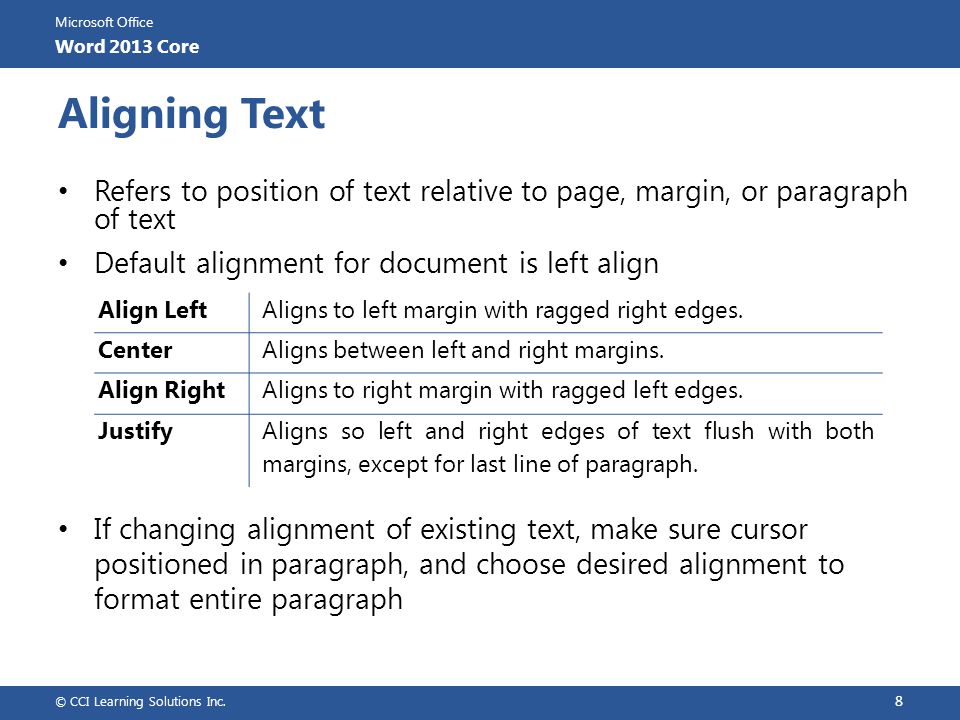

If you hover the mouse pointer over the Align Center tool, you see a ToolTip appear that explains that the tool centers text both horizontally and vertically within the cell. (This tab is visible when you are working inside of a table.) With the graphic selected or the insertion point otherwise located within the cell that contains the graphic, click the Align Center tool, which is in the Alignment group. Now take care of your alignment by displaying the Layout tab of the ribbon. Both your graphic and your table cell need to be sized so that the graphic fits fully inside the cell.


Choose, from the menu, the Wrap Text option and then In Line with Text. You can make sure the graphic is inline (instead of floating) by right-clicking the just-inserted graphic to display a Context menu. Make sure the insertion point is just in front of the end-of-cell marker, and then insert the picture. If you have other text in the cell (in addition to graphic you want there), it will throw off your centering efforts. The only thing you want in the cell is the end-of-cell marker, which looks like a small circle with four little "tails" attached to it. (Click the Show/Hide tool in the Paragraph group on the Home tab of the ribbon.) With non-printing characters displayed, you can easily tell if there are any extraneous characters in the table cell. I find it very helpful to turn on the display of non-printing characters while doing this. So, to put your graphic in the table cell, you need to click within that table cell. It is, essentially, treated like any other textual character. An inline graphic is pulled off of the graphic "layer" and placed in line with the text that surrounds it. When putting a graphic in a table cell, you'll never be able to really get it right (and keep it right) if the graphic is floating. If you insert a shape, it is floating by default. If you insert a graphic, it is inline by default. The format used by Word depends on what you are inserting.
HOW TO ALIGN A PICTURE WITH THE RIGHT MARGIN IN WORD HOW TO
He has tried several methods proposed by various websites and forums, but they have all either not worked or been too cumbersome to use.īefore figuring out how to center your image in a table cell, you must understand that there are two ways that graphics can be inserted in a Word document: floating or inline. No matter what I've tried, the right margin will not justifi.Michael wonders how he can center a picture or graphic in a table cell, both vertically and horizontally, and have it stay centered if the cell changes size. The only way to apply this alignment is through the use of a shortcut key: Ctrl+Shift+J. (For instance, you might be creating labels, signs, or placards.) This type of alignment is the same as justified alignment, except that it affects all the lines in the paragraph. This is intended for single-line paragraphs, particularly those that use large font sizes. There is, in addition, an undocumented paragraph alignment supported in Word: distributed-text justification. You can change the alignment of any paragraph by using the appropriate tools on the Formatting toolbar or by displaying the Paragraph dialog box. In some typesetting references justified text is also referred to as "full justified." This alignment affects all lines in the paragraph except for the last one, which is left-aligned. Space is added, between words and characters, as necessary to fill out the line. All lines in a paragraph are expanded so they butt up against both the left and right text margins. The text of each line does not line up with the left margin, so traditional typesetting terminology often refers to right-aligned text as ragged left. All lines in a paragraph butt up against the right text margin. The text lines up with neither the left or right margins. All lines in a paragraph are centered between the left and right text margins. The text of each line does not line up with the right margin, so traditional typesetting terminology often refers to left-aligned text as ragged right. All lines in the paragraph butt up against the left text margin. There are four types of paragraph alignment you can set within Word:

Word refers to this specification as alignment. One of the fundamental typographic specifications for laying out paragraphs is determining how they will appear in relation to the left and right margins.


 0 kommentar(er)
0 kommentar(er)
